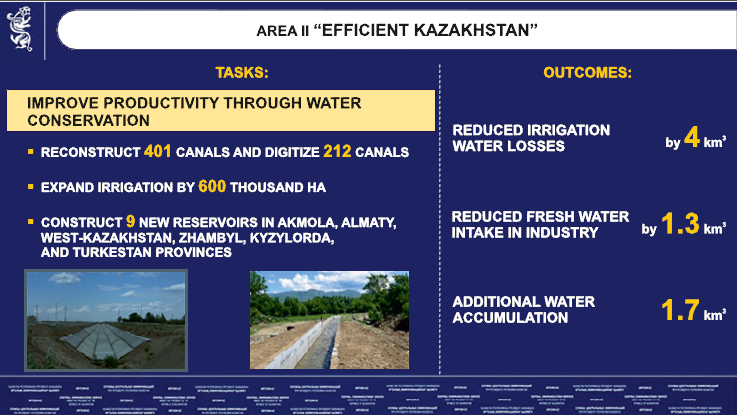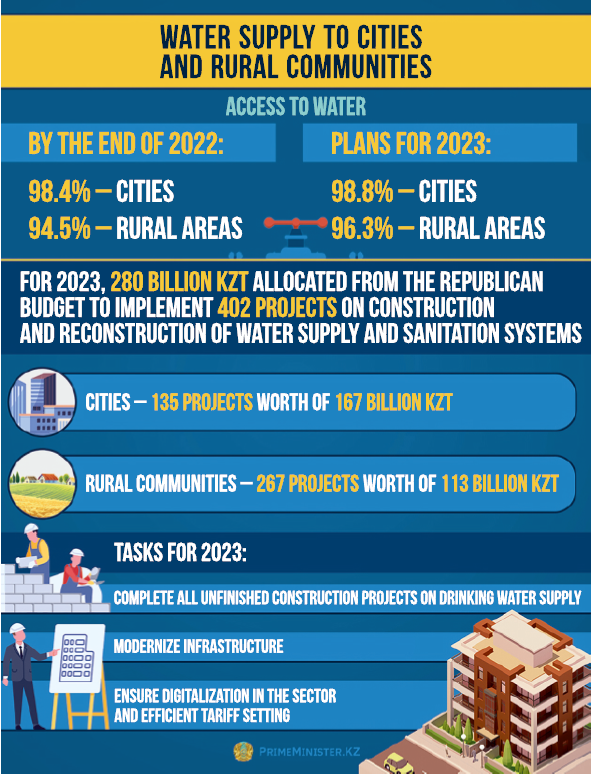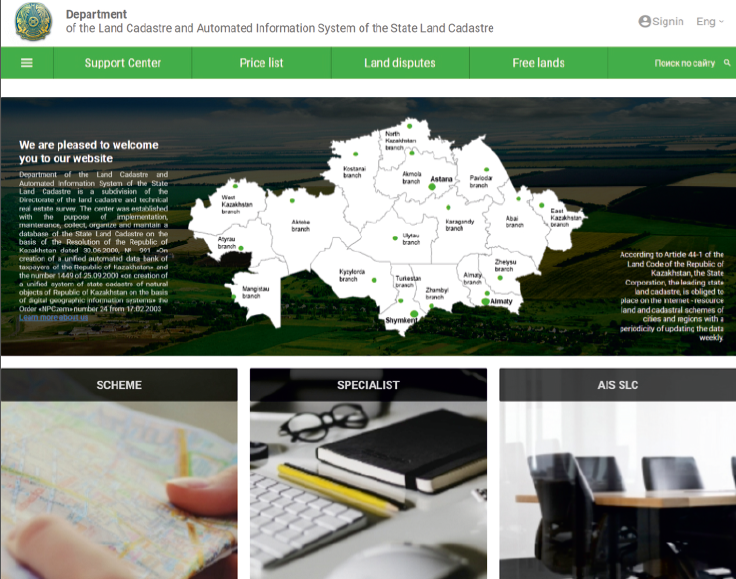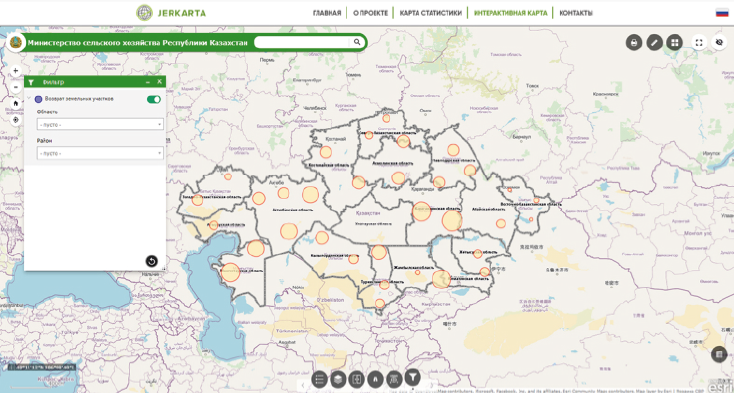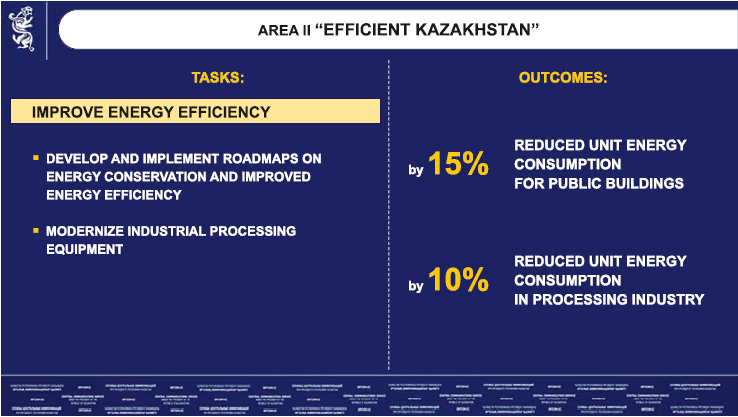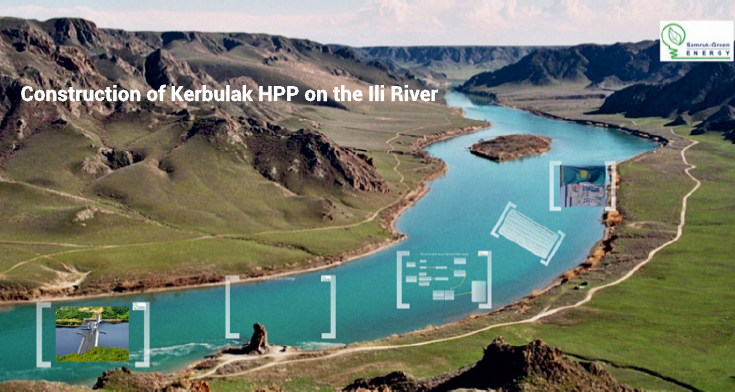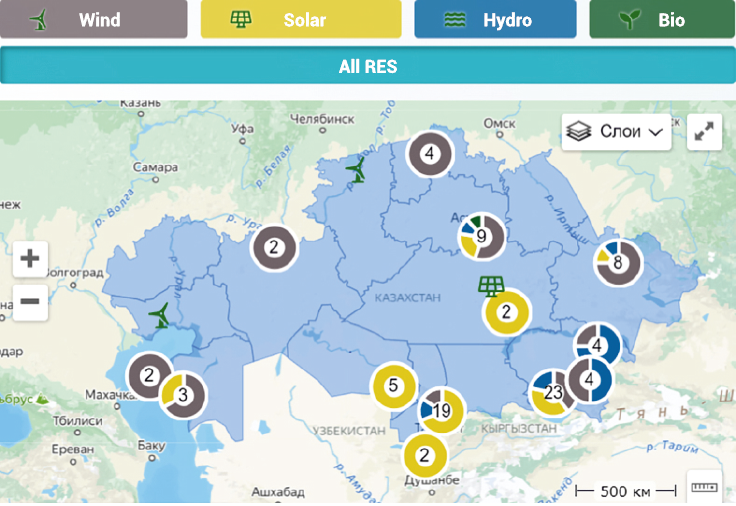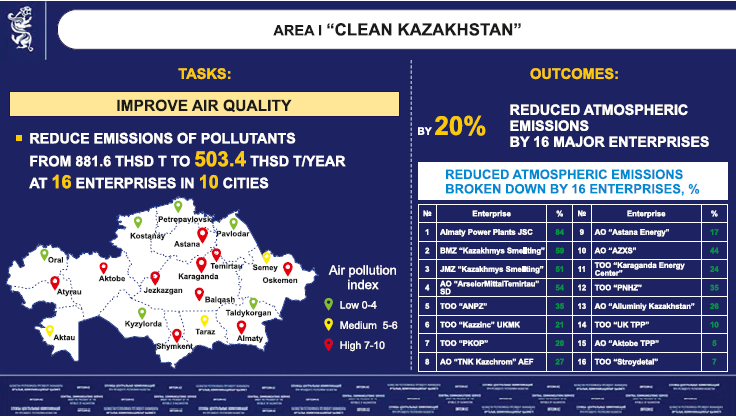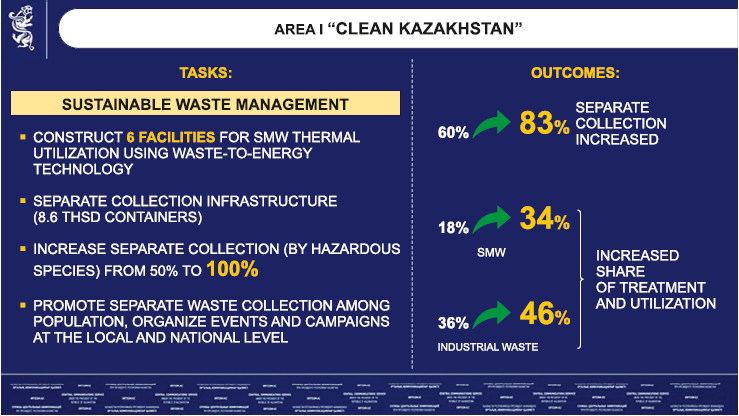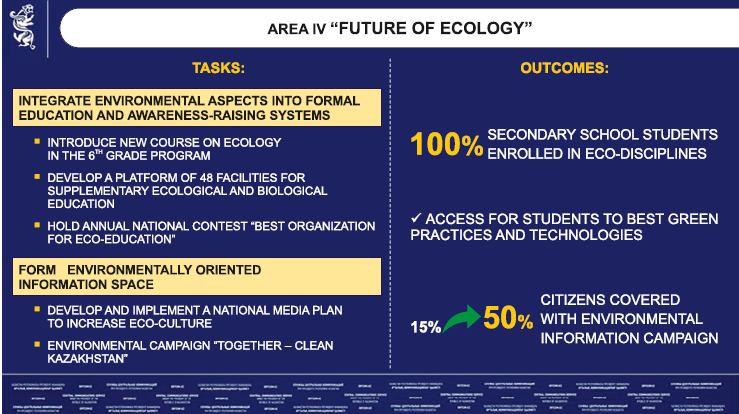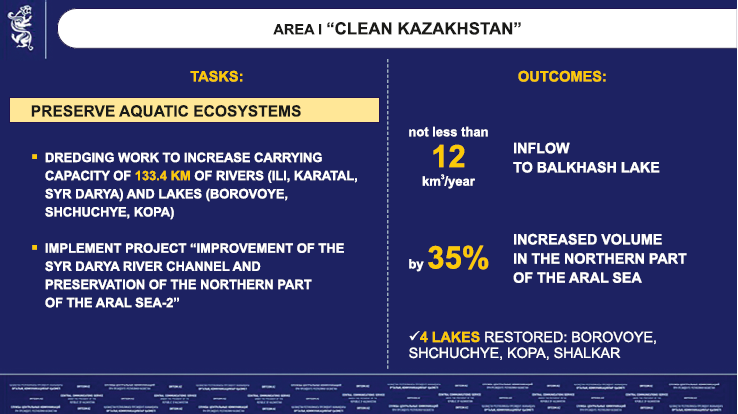
Section 5. Key water developments in the countries of Central Asia
5.1.Republic of Kazakhstan

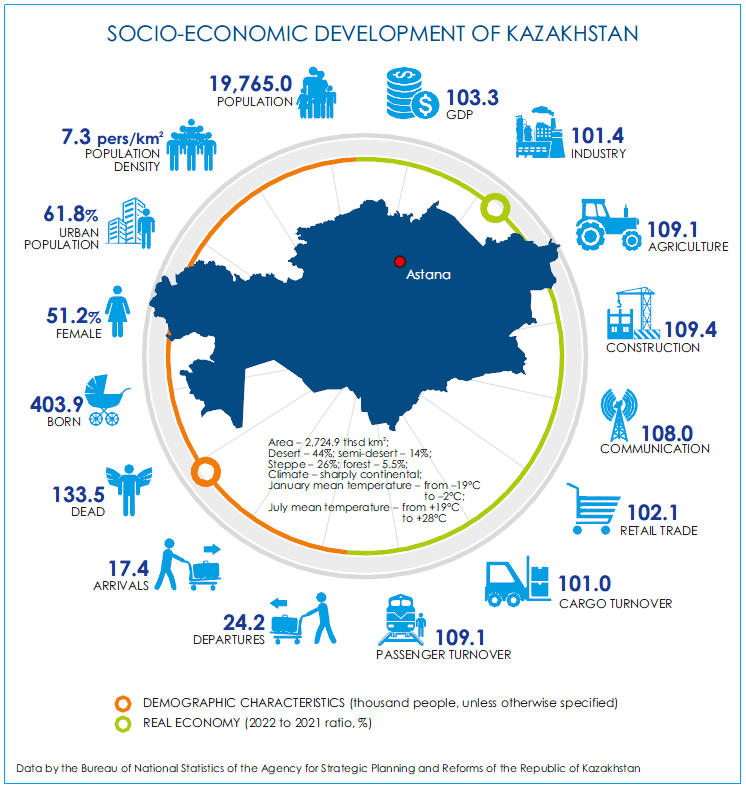
Water Sector
Water resources. There are 85 thousand rivers, with the largest of them being the Irtysh, Ishim, Ural, Syr Darya, Ile, Chu, Tobol, and 48 thousand large and small lakes in Kazakhstan. The largest lakes are the Caspian Sea and the Aral Sea, followed by Balkhash, Zaisan and Alakol lakes. Glaciers are one of major sources of river water. The average annual river runoff is 102.3 km3/year, of which 54.5 km3/year is local runoff and 47.8 km3/year flows from the Central Asian states, Russia and China.
In the future, taking into account the forecast growth of population, livestock and industrial production, water consumption will increase to 29.7 km3. According to forecasts, by 2030, internal river resources will decrease from 102.3 km3 to 99.4 km3, including due to the reduced inflow from neighboring countries, from 47.8 km3 to 46.5 km3. In this context, the country could be short of 23.2 km3, which is comparable to the total annual water withdrawal by the population and economic sectors.
Latest developments in legislation. To improve the water management system, the Water Council of Kazakhstan , was established. The Ministry of Ecology, Geology and Natural Resources was set as the Council’s working body.
Public hearings were organized on consultation documents of the regulatory policy of the Water Code (new edition) and the draft Law “On amendments and additions to some legislative acts on water protection and use” . In the new edition it is proposed to clearly define the competencies of state bodies on water accounting and monitoring; to establish a hydrological center for generalization of all data, assessment and forecasts; to provide economic incentives for water conservation, etc.
Meetings of the Water Council of Kazakhstan. During the meetings, the Council addressed: (1) the issues of electricity exchange with the Kyrgyz Republic and water supply in the southern provinces of Kazakhstan (March 11); (2) the integrated water sector development plan (September 10); (3) Draft Concept for Development of the Water Management System for 2023-2029 and progress in preparation for the republican meeting on water sector reformation. The document identifies 2 main focus areas: (1) improved water supply and demand management for sustainable development (October 15); (2) draft integrated water sector development plan for 2023-2025, which envisages the development of a new Water Code, strengthening of the country's position in the negotiation process on transboundary rivers, establishment of a scientific center for water, introduction of economic mechanisms for regulation of water use, development of water infrastructure, etc. (December 13).
Results of the growing season. According to the MEGNR, the growing season was smooth: about 11.6 km3 of the total water withdrawal was used for regular irrigation, including 97% of water allocated to 5 southern provinces – Almaty, Zhambyl, Turkestan, Kyzylorda and Zhetysu, having the total irrigated area of 1.61 million ha (73% of the total country area).
To ensure smooth growing season, the MEGNR takes a set of external and internal measures. Within the framework of trilateral cooperation (Kazakhstan, Tajikistan, and Uzbekistan): (1) 330 million m3 of water was delivered along the Dostyk Canal in summer in exchange of commodity and electricity supplies to Kyrgyzstan. In April, water supply schedules were approved and signed for the Chu (500 million m3) and Talas (220 million m3) basins. The inflow to the Shardara reservoir was expected to be 3.9 billion m3 under the agreed forecast operation mode of the Naryn-Syr Darya reservoir cascade. The actual inflow was 4 billion m3; (2) the water discharged from the Toktogul reservoir was passed through the Bakhri Tojik reservoir under an agreement reached with Tajikistan and the terms of water drawdown in the Bakhri Tojik reservoir were also agreed.
Internal measures included: repair and rehabilitation of 5,322 outlet structures in transboundary river basins; reconstruction and mechanical cleaning of 1,512 km of main and inter-farm canals that reduced water losses by more than 450 million m3; procurement of 67 pumping stations for drainage water reuse; and, automation of gauging stations on 89 canals. In the southern provinces, 1,030 km of canals were cleaned, water-saving technologies were applied on 107,000 ha, the acreage of water-intensive crops was reduced, and water rotation and sequencing were organized.
Projects. Within the framework of the national “Green Kazakhstan” project (second focus area – “Efficient Kazakhstan” ), it is planned to reduce irrigation water losses by 4 km3 and decrease fresh water industrial intake by 1.3 km3 by reconstructing 401 canals and digitizing 212 canals by 2025. Measures are envisaged to increase irrigated land area by 600 thousand ha. For additional irrigation sources, construction of 9 new reservoirs capable to store 1.7 km3 is planned.
RSE “Kazvodkhoz” of the Committee for Water Resources has got financing from the (1) IDB for the “Rehabilitation of irrigation and drainage” project ($143 million) in Almaty (Koksu, Aksu, Eskelda and Alakol districts on a total area of 35.4 thousand ha) and South Kazakhstan (Makhtaaral and Shardara districts on a total area of 101 thousand ha) provinces; (2) EDB to reconstruct 310 water facilities in Zhambyl province (Zhambyl, Bayzak, Zhualyn, Merken and Korday districts). The total area is 53.9 thousand ha, while the cost of contract work is more than 25 billion KZT. 65% of work has been completed by far. The project is to be finalized in 2023.
Ongoing projects: (1) “The governance of groundwater resources in transboundary aquifers (GGRETA)” , which aims to strengthen the joint management of the Tashkent area Transboundary Aquifer (TBA) through scientific cooperation and development of a joint mathematical model for TBA as a basis for cooperation between the countries. The forecast analysis of the operation of the Tashkent area TBA revealed a significant decrease in the level of fossil groundwater and the depletion of surface reservoirs in the areas of groundwater intake. The high rates of water consumption endanger the water quality of the Tashkent area TBA , as well as the availability of a unique source of artesian water and its preservation for future generations. Experts warn that the rate of depletion requires urgent joint action and implementation of the recommendations made in the analysis. Representatives of the MEGNR and the Uzbek State Committee for Geology and Mineral Resources at their meeting in Almaty considered the Roadmap on protection and sustainable use of mineral waters in the Tashkent area TBA and the transfer of the mathematical model to the relevant state bodies of Kazakhstan and Uzbekistan for its practical use (November 2); (2) USAID regional water and vulnerable environment activity ($21.5 million, October 2020 - September 2025), aimed at strengthening regional water cooperation between the CA countries; (3) “Second irrigation and drainage improvement in the Republic of Kazakhstan” (WB, $343.01 million, June 2013 – October 2023) to support farmers in the project areas.
Events. The MEGNR supported: (1) the roundtable on “Problems and prospects of efficient water use in Kazakhstan and CA: development of the international legal framework for cooperation” (April 22); (2) 2nd regional high-level policy dialogue on the “Energy-Water-Land Use Nexus in Central Asia” (June 16); (3) regional seminar “International experience of transboundary water allocation and prospects for cooperation development on water sharing in CA” (November 2); (4) regional workshop on safety of hydraulic facilities in CA (November 30).
The Kazakh delegation took part in the: (1) 4th joint meeting of the Working Groups on IWRM and on Monitoring and Assessment marking the 30th anniversary of the Water Convention (June 28-29, Tallinn); (2) 1st meeting of the WMO RA II Coordination Panel on Hydrology and Water Resources of (October 31-November 1, Vientiane, Lao PDR); (3) WMO Regional Association IV conference (November 2-4, Geneva).
Regional and international cooperation. The Vice-Ministers of Kazakhstan and Tajikistan discussed the water-related situation in the Syr Darya River basin and agreed on the operation mode of the Bakhri Tojik reservoir in the non-growing (2021-2022) and growing seasons (2022) (February 22).
The Minister of Energy, Geology and Natural Resources had meetings with: (1) the Minister of Water Management of Uzbekistan and discussed the joint efforts to improve water supply in the middle and lower reaches of the Syr Darya River, the signature of the Agreement between the governments on joint management and use of transboundary water bodies, the establishment of a bilateral commission for water cooperation at the level of prime ministers of the two countries; agreements were reached on joint measures to increase inflow to the Shardara reservoir and ensure stable water delivery along the interstate “Dostyk” Canal; consultations were held on the establishment of the Central Asian Water And Energy Consortium and the joint hydropower construction (February 9, Tashkent); (2) the Minister of Tourism of Israel and addressed the aspects of integration of Israeli technologies in water management, the environmental regulation, and the development of joint projects (July 12); (3) the Ambassador of Iran and talked on the matters related to the Framework Convention for the Protection of the Marine Environment of the Caspian Sea and water cooperation (July 15).
The following events were held: (1) 3rd session of the Kazakhstan-Russia Commission on Preservation of the Ecosystem of the Transboundary Zhayik River basin (April 21, Omsk); (2) 9th meeting of the Kazakhstan-China Commission for Environmental Cooperation (October 13, online); (3) 12th (30th) meeting of the Kazakhstan-Russia Commission on Joint Transboundary Water Use and Protection (November 17, Tyumen); (4) 10th meeting of the Working Group on Environmental Protection (WGEP) under the Secretariat of the Chu-Talas Water Commission (November 18, Bishkek).
The agreement was signed between the Governments of the Republic of Kazakhstan and the People's Republic of China on joint management and operation of an intake structure on the transboundary Sumba River (September 14).
Drinking Water Supply
By present, 96.8% of the country population (urban - 98.4%, rural - 94.5%) has access to drinking water thanks to implementation of national programs . This means that 19.1 million people out of 19.7 million are fully provided with water. The lowest figures are in Kostanay, Akmola, and North-Kazakhstan provinces. The task is to reach 100% access to drinking water by the end of 2025. The MEGNR plans to implement 8 projects for construction and reconstruction of clustered water mains (CWM), which will provide safe drinking water to 41 rural communities of 22.3 thousand people and improve water supply to 52 rural communities of 33 thousand people.
Currently, there are 15.5 thousand-km long 76 CWMs, of which 39 CWMs (13.4 thousand km) are under the property of the Republic. 6.1 billion KZT are allocated for construction and reconstruction of CWMs in Almaty, Atyrau, Karaganda, Kyzylorda, Mangistau and North-Kazakhstan provinces. This work is to be completed in 2023-2024.
Agriculture
In Kazakhstan, 1.4 million ha of irrigated land produce crops, the bulk (1.2 million ha) of which is located in the southern regions. The task is bring 610 thousand ha of land used as rainfed due to lack of water sources back into production and develop additional 1.5 million ha of new irrigated area.
In 2023, the total crop acreage will reach 23.4 million ha, which is 68.6 thousand ha more than in 2022. It is planned to increase grain and leguminous crop acreage by 117 thousand ha, fodder crops – by 36.5 thousand ha, and sugar beet – by 6.7 thousand ha.
Latest developments in legislation. (1) Food Security Plan of the Republic of Kazakhstan for 2022-2024 (PPRK No.178 of 31.03.2022), which makes provisions, among others, for the expansion of the acreage of highly profitable crops; increase in coverage of irrigated land by water-saving technologies to 265 thousand ha in 2022, 300 thousand ha in 2023, and 373 thousand ha in 2024; construction of a modern irrigation system manufacturing plant in 2024; development of a national extension service, reaching up to 25% of agro-industry entities by 2025, etc.; (2) 2022 Action Program of the Government of Kazakhstan and the roadmap for the Program (PPRK No.241 of 25.04.2022).
(1) Presidential Decree (PRK No.1 of 26.11.2022) “On the Concept of Rural Development in the Republic of Kazakhstan for 2023-2027”; (2) Government Decree (PPRK No.726 of 22.09.2022) “On approval of the Master Plan for sugar industry development in the Republic of Kazakhstan for 2022-2026”, including a number of measures for sound water use and application of water-saving technologies.
Amendments and additions were made to the Regulations on the Kazakhstan Ministry of Agriculture.
Public discussions are initiated on draft Government Decrees: “On amendments and additions to the Resolution of the Government of Kazakhstan No.960 of December 30, 2021 “On approval of the Concept for Agro-Industrial Development in the Republic of Kazakhstan for 2021-2030”; “On approval of the Master Plan for Development of Crop Selection and Seed Production in the Republic of Kazakhstan for 2023-2027.”
An updated draft of the Concept for Agro-Industrial Development up to 2030 is under development. It sets the following main objectives among others: increase labor productivity in the sector 2 times; increase agricultural exports 3 times; and, achieve food self-sufficiency at the level of at least 90%. It is also planned to increase investments on average 2.5 times in fixed assets of agriculture.
New appointments. E.Sh.Karashukeyev was appointed the Minister of Agriculture (PPRK No.756 of 11.01.2022).
The 2022 results. The gross agricultural production increased by 9.1% to 9.3 trillion KZT. Grain harvests increased by 44% and reached 17 million tons. Over 13.2 million tons of agricultural products were exported.
The subsidies to agro-industry amounted to 450 billion KZT or 139 billion KZT more than in 2021; the financing of field work increased from 110 to 220 billion KZT. 270 investment projects worth of 241 billion KZT were put into operation. As a result, investments in fixed assets of agriculture increased by 6.7% to 853.5 billion KZT, and those in food production – by 15.7% to 140.6 billion KZT. In the Global Food Security Index, the country ranked 32nd out of 113 countries, improving its position by 9 points.
Since the beginning of the year, it became possible to track the ownership of agricultural land plots online (with indication of all grounds and normative legal acts) through the automated information system of the State Land Cadastre (AIS SLC, http://aisgzk.kz/). The geoservice (jerkarta.gharysh.kz) – an interactive map of land returned to the state – has been launched.
Projects and capacity building. As part of the “Enhancement of postgraduate studies on sustainable agriculture and future farming systems”/SAGRIS project (EU under ERASMUS+, 2020-2023), the second block seminars and study tours were held on different modules: (1) “SMART agriculture and digitalization” (February 28-March 4, June 17-27); (2) “Crop and livestock systems under climate change” (June 6-10, October 23-November 5); (3) “Advanced research methods” (December 5-8); (4) “Transdisciplinary research methods for sustainable agriculture” (May 11-20).
NASEC launched the “Promotion of sustainable food systems and improved ecosystems services in Northern Kazakhstan landscape” project (UNDP, 2021-2023) to reduce degradation of productive agricultural land and associated high value ecosystems. GEF allocates grants for $10 million 467 thousand.
For UNDP projects and FAO work on agriculture and food, see the United Nations and its Specialized Agencies.
NASEC continued developing the National Bank of Plant Genetic Resources to collect all samples of crops and their wild relatives in a single repository and the national program “Plant breeding - 2.0 KZ”. Agrarian universities developed under NASEC supervision a new system of training in digitalization of processes, automation of agricultural data collection and transmission, which is based on modern information technologies and aims to integrate with the global information and education process.
The round table “Key challenges of agro-industry development in Kazakhstan and their solution” was held at the Kazakh Research Institute of Agriculture and Plant Growing at NASEC (June 14).
Events. The following events took place: (1) international agro-industrial conference “Asia Grains&Oils Conference 2022” (April 7, Nur-Sultan); (2) specialized exhibition “Kazakhstan Field Day”/Jana Dala/Green Day - 2022” (July 13-14, Akmola province); (3) international agricultural exhibition “KazAgro/KazFarm – 2022” (October 12-14, Astana).
International cooperation. The Minister of Agriculture discussed the matters of bilateral agro-industrial cooperation with agricultural ministers of: (1) Russia (June 17, Saint Petersburg, Russia); (2) Kyrgyzstan (October 29, Almaty, Kazakhstan); (3) Uzbekistan, with the following signature of the Cooperation Program for trade and joint investment agro-industrial projects (December 22, Tashkent, Uzbekistan).
A number of documents were signed also between Kazakhstan and Iran, including the Memo on delivery of 1 million t of grain crops to IRI from the 2022-2023 harvest.
Energy
By January 1, 2022, about 190 stations on national, industrial and regional scale have produced electricity production in Kazakhstan. Their total installed capacity is 23,957.3 MW, while the available capacity is 19,004 MW in winter and 17,364.5 MW in summer.
The current depreciation degree of thermal and hydro-power plants (TPP and HPP), excluding RES, is about 57.5%. About 55.5% of generation equipment at the stations is more than 30 years old, including TPPs – 10,620 MW (55%), HPPs - 1,729.3 MW (62%).
It is planned to: (1) modernize a number of existing generating assets and commission new ones to produce additional 11.7 GW; (2) increase the share of renewable energy to 12.5% in the total generation; (3) reduce depreciation of energy grids to 47%; and, (4) finalize the formation of a unified energy system in the republic.
The 2022 results Energy generation amounted to 112.8 billion kWh (by 1,582 million kWh less than in 2021); the plan for the current year is 114.9 billion kWh.
Renewable energy generation is 5.11 billion kWh (2,411 million kWh by wind, 1,763 million kWh by solar; and, 934 million kWh by hydro) or 4.53% of the total energy generation (it is planned to increase this figure to 5% in 2023).
The 2022 showed a 945.7 million kWh or 0.8% decrease in electricity consumption in the republic s compared to 2021. Power export to the Russian Federation amounted to 1,257.6 million kWh, while import from the Russian Federation was 1,142.9 million kWh.
The Kazakhstan Ministry of Energy has developed: (1) draft “Concept for Energy Development in the Republic of Kazakhstan until 2035”, including reformation of the electricity market by transferring to a new model on the base of centralized buying and sale of electricity; a package of law amendments was prepared as a first stage of implementation of this vision (September 26); (2) Energy budget of the Republic of Kazakhstan until 2035, as part of which further development of the energy sector, including forecasts for power production and consumption was modeled. Power consumption in the country will grow to 152.9 billion kWh, with the annual average growth rate of 2.7% since 2021. Additional 17.5 GW will need to be commissioned by 2035 to cover the needs of economic sectors and population. The “Tariff in Exchange for Investment” program is under development; it will allow reconstructing, modernizing and expanding existing assets of power producing organizations. It is estimated that investments in the sector will amount to 400 billion KZT annually. In 2023, a digital energy platform will be put into operation to manage risks and track technical conditions of plants.
Energy efficiency.Energy saving and improved energy efficiency are among key objectives of the modernization of national infrastructure.
As part of the national “Green Kazakhstan” project (second focus area - “Efficient Kazakhstan”), the tasks are to reduce energy consumption in state-financed organizations and increase energy efficiency in industrial entities, including processing industries.
Latest developments in legislation. The “Concept for Development of the Fuel and Energy Sector in the Republic of Kazakhstan for 2022-2026” was approved (PPRK No.931 of 21.11.2022).
A law on thermal power that envisages the transition to a new market model for centralized buying and sale of electricity, as well as the introduction of a real-time balancing energy market is to be adopted. These measures will reduce imbalances in the energy system and offset the impact of high tariffs for new energy sources.
New appointments. B.U.Akchulakov was appointed the Minister of Energy (UPRK No.756 of 11.01.2022) and A.G.Khasenov became a Vice-Minister (January 15).
Hydropower
All HPPs in the country generate cumulatively 8-9 billion kWh on average per year. The total hydropower potential is 170 billion kWh a year, of which 62 billion kWh are technically feasible, whereas 30 billion kWh are viewed as economically feasible. Hydropower accounts for about 9% of the total energy generation. The country continues to implement the 2020-2030 Hydropower Development Plan.
Construction and modernization of HPPs. Design specifications and estimates were prepared for a vibration control system of hydraulic units at the Kapshagay HPP . To increase its regulation capacity up to 300 MW, the Samruk-Kazyna Fund and JSC Samruk-Energy implement the “Construction of counter-regulating Kerbulak HPP on the Ili River” project (2021-2026, 40 MW).
The work is underway on the investment project, which is aimed to increase power generation at the Moynak HPP by 100 million kWh per year. The project involves transferring a portion of the Kensu River flow to the Bestyubinsk reservoir to extend the regulation capacities in Almaty province.
At Shardara HPP , power generation reached the installed capacity of 126 MW for the first time after reconstruction; all 4 hydropower units are operational.
Alternative energy sources
There are 130 RES facilities with the installed capacity of 2,400 MW (46 wind plants – 958 MW; 44 solar plants – 1,148 MW; 37 hydro – 280 MW; 3 bio – 1.77 MW). The Concept of Transition to Green Economy in Kazakhstan and the 2050 Strategy of Kazakhstan set the goals to bring the share of RES in the country's energy budget to 6% in 2025, 15% in 2030, and 50% in 2050. In 2022, 12 RES projects, with the total capacity of 385 MW were implemented. In 2023, 15 new 257-MW RES projects are planned to be commissioned.
RES facilities in Kazakhstan
Small HPPs. AO Samruk-Energy conducts the pre-design work on HPP-29 on the Shelek River.
For the Almaty Power Plants JSC “Reconstruction and modernization of the cascade of HPPs” project (2022-2028), the feasibility study is developed. The current and future water balance in the basin of the Big Almatinka River is drafted for the period up to 2040 to this end. The Board of Directors of the AO Samruk-Energy decided to start the project investment phase in 2023.
Wind power. New wind stations were installed: (1) 100-MW “Abay-1” in Abay province; (2) 60-MW wind power plant in Almaty province . The WPPs will generate 225.7 million kWh to reduce GHG emissions to 206 thousand t and replace about 89 thousand t of conventional fuel per year.
Memoranda/Agreements were signed with: (1) the Construction Corporation of China Ltd. to cooperate on implementation of the second project phase, with the expansion of the Shelek Corridor WPP and increasing its capacity up to 300 MW; (2) Masdar (UAE) and KIDF to develop a project for the construction of WPPs in Zhambyl and/or Turkestan provinces. Construction is planned for 2025; (3) ACWA Power (Saudi Arabia) to construct and operate 1-GW WPP in Zhetysu province (Dzungarian Gate). Construction is planned for 2025; (4) TotalEnergies for implementation of 1-GW wind project near Mirny settlement in Zhambyl province in 2024-2026.
Solar power. The following solar stations were commissioned: (1) 4.95-MW “Ushtobe” plant, with planned annual generation of more than 7 million kWh for Ushtobe town in Almaty province; (2) 50-MW “Aisha kunshuak” plant in Auliekol village, Zhambyl province, etc.
Events. The Kazakh delegation took part in the: (1) 13th session of the International Renewable Energy Agency/IRENA Assembly (January 14-15, Abu Dhabi, UAE); (2) 27th Baku Energy Week (June 1-3, Baku, Azerbaijan); (3) 2nd meeting of Energy Ministers of the SCO Member States (June 24, Tashkent, Uzbekistan); (4) 60th meeting of the CIS Electric Power Council (July 14, Nur-Sultan, Kazakhstan); (5) conference “Kazakhstan-German hydrogen cooperation: status quo and prospects” (September 7).
Environment and climate change
Latest developments in legislation. To form the legal framework of state policy on flora preservation, protection, restoration and use, the following laws were adopted: (1) “On the flora” (No.183-VII of 02.01.2023); (2) “On amendments and additions to some legislative acts of the Republic of Kazakhstan on the flora and specially protected natural territories” (No.184-VII of 02.01.2023); (3) “On amendments and additions to the Criminal Code and the Code on Criminal Procedure of the Republic of Kazakhstan on strengthening responsibility for environmental offences and manifestations of vandalism” (No.186-VII of 03.01.2023); (4) “On amendments and additions to the Code on Administrative Offences of the Republic of Kazakhstan on strengthening administrative responsibility for environmental offenses and manifestations of vandalism” (No.187-VII of 03.01.2023).
Projects. During the years of the “Sustainable Forest Management” (GEF/UNDP) project implementation, the Concept of High Conservation Value Forests (HCVF) for Kazakhstan and the Guidelines on HCVF identification, assessment and management were developed. The Program of additional environmental education was prepared and implemented for schoolchildren of 6-8 grades.
The national “Green Kazakhstan” project is ongoing (first area “Clean Kazakhstan” contributes to addressing major environmental issues, fourth one – “Future of Ecology” – to improving eco-education).
The regional “Central Asia Hydrometeorology Modernization” project was continued (WB, stage I: September 1, 2011 – December 31, 2018, stage II: January 1, 2019 – March 30, 2023); the key tasks are as follows: (1) rehabilitation of infrastructure and human capacity; (2) dealing with climate change effects; (3) support of economic development in water, agriculture, energy and transportation. The implementation progress for 2022, work program and action plan for 2023 were discussed by the CA countries at the annual meeting of the project Steering Committee (November 24, Almaty).
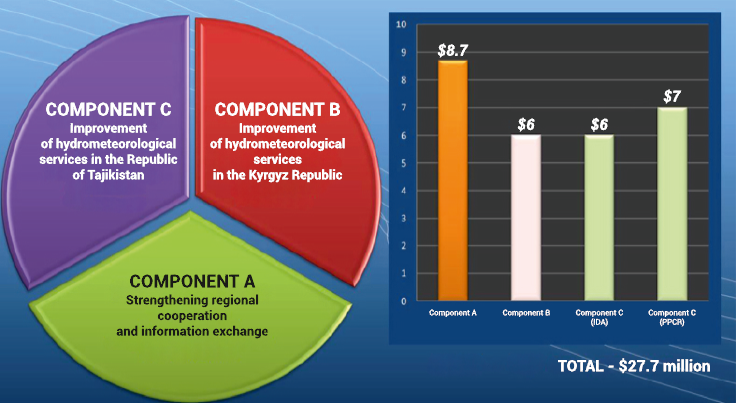
Large-scale afforestation was continued: 239 million trees were planted on 166 thousand ha in 2022, and additional 409 million trees are planned on 188 thousand ha in 2023. The afforestation work is underway on the dried bed of the Aral Sea on 250 thousand ha.
As part of the “Environmental Restoration of the Aral Sea I” project (ERAS-I) (USAID, $35 million, October 2021 – September 2024), about 200 thousand seedlings of black saxaul planted on 18 plots (5 ha each) are under monitoring. Based on the survival and plant growth, the most effective and efficient afforestation practices will be determined. A field station was constructed; work has commenced on a borehole well to provide irrigation to the site.
Events. In 2022, the National Hydrometeorological Service of Kazakhstan celebrated its 100th anniversary (May 30). RSE “KazHydromet” opened access to the: (1) State Climate Cadastre, which consists of 3 parts: meteorological monthly reference books; meteorological yearbooks; reference books on climate in Kazakhstan; (2) meteorological database.
The following events were held: (1) environmental campaigns – “Birge - taza Qazaqstan” (Together – Clean Kazakhstan) (March), world clean-up day “Think globally, act locally” (September 17), “No littering in nature!” (October); (2) international conference on environmental protection (June 3, Mangistau); (3) regional youth conference on climate and water in Central Asia (RCOY Central Asia) (October 24-27, Astana).
The Kazakh delegation took part in the: (1) 34th session of the International Coordinating Council of the UNESCO Man and the Biosphere Program, which approved the decision to include the Burabay national park (Akmola province) and the Markakol state nature reserve (East-Kazakhstan province) in the UNESCO World Network of Biosphere Reserves (June 13-17, Paris, France); (2) international conference “Climate migration in Central Asia: challenges and solutions” (October 19, Tashkent, Uzbekistan); (3) Global Climate Change Conference (COP27), where the MoU on strategic partnership on sustainable raw materials, batteries and green hydrogen value chains and the Framework Agreement with Fortescue Future Industries on the implementation of green hydrogen production projects in several regions of the country, including Atyrau and Mangistau provinces, were signed (November 7-18, Sharm el-Sheikh, Egypt); (4) 7th ESCAP ministerial conference on environment and development (November 30, Bangkok, Thailand).
International cooperation. The MEGNR RK signed: (1) MoU on forestry cooperation with the Committee of Forestry and Wildlife and the General Directorate of Forestry of the Ministry of Agriculture and Forestry of the Republic of Turkey and MoU on environmental cooperation with the Ministry of Environment, Urban Development and Climate Change of the Republic of Turkey (May 10-11, Ankara, Turkey); (2) MoU on cooperation in the field of environmental protection with the Ministry of Environment of the Czech Republic (October 3, Prague, Czech Republic); (3) MoU on forestry with the State Committee on Forestry of the Republic of Uzbekistan. The Agreement between the Governments of Kazakhstan and Uzbekistan on environmental cooperation was also signed (December 21-22, Tashkent, Uzbekistan), see Bilateral Water Cooperation between the Countries of Central Asia
SDGs in Kazakhstan
Kazakhstan ranked 65 among 163 countries in the annual sustainable development rating.
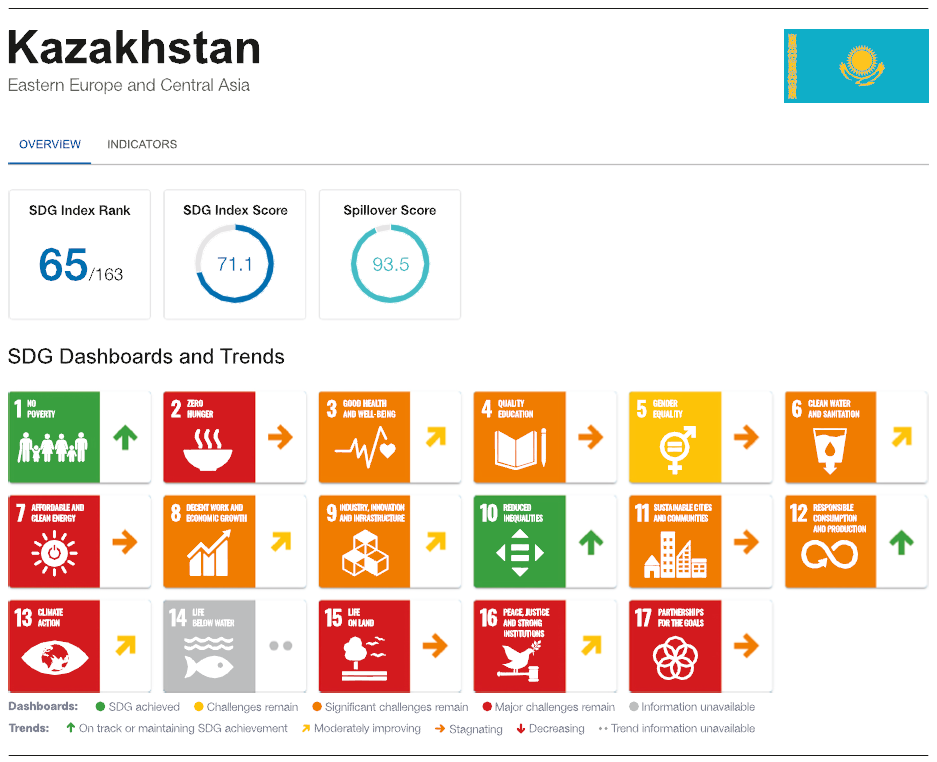
Events. In the course of the year, the following events were held: (1) 2nd Regional SDG summit “Beyond COVID – towards just recovery in Central Asia” (June 16, Almaty); (2) field seminars to promote SDGs (March 13 - April 15, throughout Kazakhstan); (3) seminar on localization of SDGs and Mission 2030 business game (March 29, Almaty); (4) 6th North and Central Asia multi-stakeholder forum on implementation of the Sustainable Development Goals (October 6-7, Almaty).
Kazakhstan delegations participated in the: (1) UN High-level Political Forum on SDGs (July 5-15, New York, USA), where Kazakhstan presented its second Voluntary National Review on the implementation of SDGs ; (2) roundtable “Accelerating achievement of SDGs by 2030: addressing on-going crises and overcoming challenges” (July 14, New York); (3) side-event “Localizing SDGs in Kazakhstan: partnership for present and future generations” (July 15, New York).
Emergencies and Disastersя
Over 13 thousand natural and anthropogenic emergencies were registered throughout the country in 2022. The damage from natural disasters was estimated at 36,663.73 million KZT. As a result of floods and showers in spring and summer, houses and crops were flooded, livestock died, and roadbeds were destroyed.
Preventive measures. As part of implementation of the Comprehensive Plan for Mudflow, Landslide and Avalanche Safety for 2020-2024, construction of mudflow retaining dams on the Aksai and Ayusai rivers was continued to protect the population of Almaty and Almaty provinces and minimize economic damage from mudflows. Kazakhstan, together with PRC, is also constructing the Chukurbulak mudflow retaining dam, as well as protective structures on the Khorgos River. Ongoing activities: (1) cleaning of river beds, lakes, drainage channels and ditch networks; (2) bank protection on rivers in West-Kazakhstan, Karaganda, Atyrau provinces and Almaty city; (3) republican test of the civil warning system; (4) construction of drainage channels.
Projects. Within the framework of the “Improving the methodology and practice of disaster risk monitoring and assessment using innovative ICT” project (OSCE): disaster risk monitoring and assessment of high-altitude breakthrough lakes was carried out in the basin of the Ulken River (Almaty) using innovative ICT; proposals to reduce the risk of emergencies, “Recommendations on methodology and practice of disaster risk monitoring, assessment and evaluation using ICT”, and an interactive map of the Ulken River basin were developed; an interim narrative report with annexes was prepared.
Events. The delegation of Kazakhstan participated in the: (1) regional forum of heads of emergency agencies of the CA countries (October 4-6, Dushanbe, Tajikistan); (2) 55th session of the Executive Council and the 25th session of the General Assembly of the International Civil Defense Organization (November 22-24, Abu Dhabi, UAE); (3) events on building resilience to disasters and climate change in CA (November 28-29, Brussels, Belgium); (4) 8th summit of ministers of emergency situations of the Organization of Turkic States (December 21, Ankara, Turkey).
Foreign Policy and International Cooperation
In 2022, the Head of State paid state, official and working visits to the PRC, Russian Federation, Uzbekistan, Qatar, Turkey, IRI, Saudi Arabia, USA, France, Azerbaijan, Kyrgyzstan, UAE, Turkmenistan, and Armenia.
Development of alliances and strategic partnerships. In May, K.-J. Tokayev paid an official visit to Kyrgyzstan, where: (1) a number of bilateral cooperation documents were signed; (2) aspects of the Kazakhstan-Kyrgyzstan strategic partnership were discussed, with a special focus paid to expanding ties in the political, trade and economic, cultural and humanitarian spheres; (2) issues on the regional agenda were addressed (May 26, Bishkek, Kyrgyzstan), see Bilateral Water Cooperation between the Countries of Central Asia.
In December, the President of Kazakhstan paid a state visit to Uzbekistan (December 21-22, Tashkent, Uzbekistan), in the course of which: (1) aspects of the Kazakh-Uzbek strategic partnership, energy cooperation, transboundary river sharing, international and regional agenda were discussed; (2) Agreement on Allied Relations between RK and RUz and a number of other bilateral cooperation documents were signed; (3) a ceremony was held to launch the construction of joint facilities (December 22); a joint media briefing was held (December 22). See Bilateral Water Cooperation between the Countries of Central Asia
The President of Kazakhstan also took part in the: (1) CSTO meetings; (2) summits “Central Asia-China” (January 25, online) and “Central Asia-India” (January 27, online); (3) EAEU meetings; (4) 6th Caspian summit, which resulted in the adoption of the Communique (June 29, Ashgabat, Turkmenistan); (5) 4th consultative meeting of the Heads of States of Central Asia (July 21, Cholpon-Ata, Kyrgyzstan); (6) meeting of the SCO Council of Heads of State in a narrow and expanded formats (September 16, Samarkand, Uzbekistan); (7) summit of the Organization of Turkic States (November 11, Samarkand, Uzbekistan).
Kazakhstan hosted: the Central Asia-Russia summit (October 14, Astana); 1st meeting of the Heads of State of CA and EU (October 27, Astana). The delegation of Kazakhstan participated in the international conference “Afghanistan: security and economic development” (July 25-26, Tashkent, Uzbekistan).
Chairmanship in international organizations. Kazakhstan held the presidency of CIS in 2022 and organized meetings of the CIS Council of Heads of State (October 14, Astana), Council of Heads of Government (October 28, Astana), Council of Ministers of Foreign Affairs (October 12, Astana). The 77th session of the UNGA adopted a special resolution on “Cooperation between the United Nations and the Commonwealth of Independent States” , which was introduced for discussion by Kazakhstan and supported by the UN Member States (November 21, New York, USA). In addition, the President participated in informal meetings of the Heads of CIS Member States (October 7 and December 26, Saint Petersburg, Russia).
As part its chairmanship in the CICA, Kazakhstan hosted an informal ministerial meeting (21 September, New York, USA), the CICA 30th anniversary meeting (5 October, Astana), and the 6th anniversary CICA summit (October 12-13, Astana). The 6th summit resulted in the adoption of a number of documents, including the Astana Statement. Kazakhstan's chairmanship in the CICA was extended until 2024.
Promotion of the national interests and reinforcement of the country’s image. Kazakhstan actively cooperates with the OIC, UN, EU, OSCE, ECO and others.
In 2022, the Kazakh MFA and the Office of the UN Resident Coordinator jointly held an international conference “30 years of Kazakhstan's accession to the United Nations” (March 2, Astana). At the 76th session of the UNGA, Kazakhstan was elected to the UN Human Rights Council for 2022-2024 (October 14, 2021, New York, USA). Priority areas of Kazakhstan's work in the Council include promoting gender equality and women's empowerment, ensuring inclusive and universal education, and others. Speaking at the 77th session of the UNGA, K.-J.Tokayev noted: “We intend to work together with all stakeholders to address a pressing regional agenda that includes climate change, the Aral Sea, rational use of water resources, … we consider it important to establish the UN Regional Centre for SDGs for Central Asia and Afghanistan in Almaty” (September 20, New York, USA). The President of Kazakhstan participated in the Global Food Security Summit (September 21, New York, USA).
At the 7th meeting of the ESCAP Committee on Environment and Development, Vice-Minister of Ecology, Geology and Natural Resources Z. Suleymenova was elected Vice-Chair of the Committee and made a country presentation under the agenda item “Protecting our planet through regional cooperation and solidarity in Asia and the Pacific” (November 29-December 1, Bangkok, Thailand).
Sources
Official sites of: the President of Kazakhstan,
Ministry of Ecology, Geology and Natural Resources,
Ministry of Agriculture,
Ministry of Energy,
Ministry of Emergency Situations of the Republic of Kazakhstan,
Information agencies: inbusiness.kz, ainews.kz, kazenergy.com, forbes.kz, kursiv.kz, informburo.kz, liter.kz, kazaral.org, kazakh-zerno.net, inform.kz, kaztag.kz, centrasia.org
